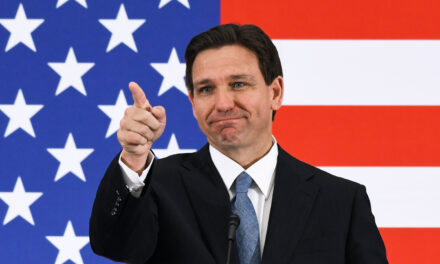
The Federal Government Still Spends Way More on the Elderly Than on Children
A paper being presented this week at the Brookings Institution outlines the substantial long-term benefits of the investment in early childhood to our society.
However, federal spending is still being spent significantly more on the elderly than children.
In 2015, the federal government spent about $35,000 per elderly person though Medicare and social security programs versus the $5,000 on children through Medicaid, tax credits and food stamp programs.
“This imbalance is of particular interest given the fact that spending on children can be viewed as an investment while spending on the elderly is not,” said the paper’s authors Hilary Hoynes, University of California, Berkeley economist and Diane Whitmore Schanzenbach, Northwestern University economist.
The paper suggests that “investments in early life can have particularly strong impacts on later-life outcomes” for children in lower income households and can lead to better health, education, and earnings later in life.
As the paper points out, even with the recent studies proving this, the spending on children has yet to match that of the elderly.
“Government spending has not responded to our increasing understanding of the importance of resources during early life, and the positive spillovers from safety-net spending on children,” writes the paper.
Even with this research, the benefits are still difficult to measure.
“The costs are easily measured today but many of the benefits are harder to measure and may not appear until the longer run,” said the paper’s authors.
Not to mention, government spending on direct cash assistance to low-income families has declined over the years. Now, working parents in this segment of the population are being given other benefits like earned-income tax credits and the Medicaid health-insurance program.
This could be a problem during an economic slump because “building a safety net around work leaves families with little protection during times of high unemployment,” says the paper.
This issue has been discussed for years. In 2000, the Congressional Budget Office (CBO) spent $615 billion, a little over one-third of its budget, on the elderly and spent $148 billion on children.
Then in 2004, an average of $8,942 was spent in public spending per child under age 19 and $21,904 per elderly person, which was 2.4 times more than the amount spent for children.
Back in 2013, the Urban Institute statistic said federal spending on seniors was nearly seven times that on children. But the same institute said that state and local governments spend nine times on children than the elderly.
Author’s note: This continues to be a topic of debate for good reason. On one hand, children are the future and if given more resources, this could have a positive impact on the society in the long run. But on the other hand, the elderly have spent years earning their benefits by paying taxes and contributing to society. They have a right to the benefits they worked hard for.


























What the Fox, Larry, just crickets? Comforting it is, there is a spot where I can say whatever is in…
Isn't a statute of limitation up on that one. This is litigious Trump going after his old demons he hasn't…
It is interesting how these studies get their 15 minutes of fame. Why didn’t The Dumpster use this to answer…
At least...... Stronger economy because of tariffs? Like Hoover delivered? This is a very bad thing to do; there is…
Well, if you can't share yours, keep your needs to yourself :>)